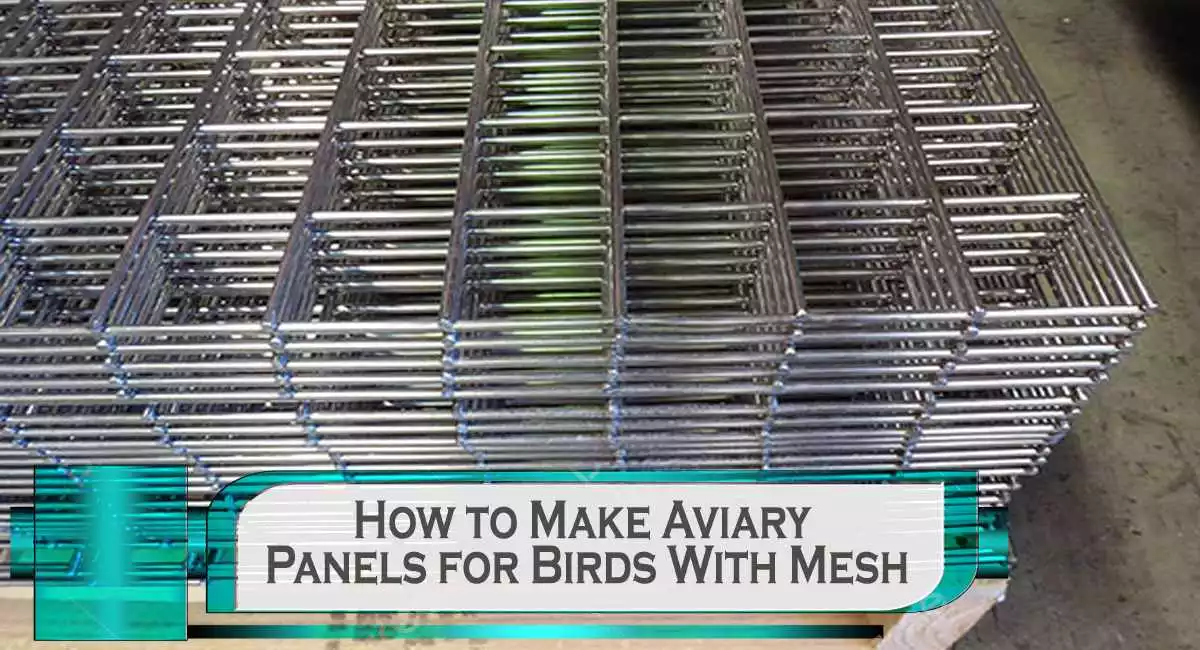Building your aviary panels can be a rewarding project if you’re a bird lover looking to create a safe and spacious environment for your feathered friends. In this guide, we’ll walk you through how to make aviary panels for birds with mesh—a cost-effective and customizable solution for bird enclosures.
Constructing aviary panels isn’t as manageable as it may seem. With suitable materials and a bit of effort, you can create a sturdy and secure habitat. Significantly, this guide will help you make aviary panels accessible from harmful elements, ensuring your birds’ safety.
Why Use Mesh for Aviary Panels?
| Feature | Value |
|---|---|
| Durability | Long-lasting and resistant to wear and tear. |
| Ventilation | Excellent airflow, keeping the environment healthy for birds. |
| Visibility | Allows easy observation of the birds. |
| Safety | Protects birds from predators while preventing escapes. |
| Customizability | Can be easily shaped and adjusted to fit your design. |
How to Make Aviary Panels for Birds With Mesh
Materials You’ll Need
Before you start, gather these essential materials:
- Galvanized Wire Mesh: A robust and rust-resistant mesh is ideal. The size of the mesh openings should be appropriate for the birds you’re housing.
- Frame Material (Wood or Metal): Choose a sturdy frame material that complements your mesh.
- Staples or Screws: For securely attaching the mesh to the frame.
- Cutting Tools: You’ll need wire cutters for the mesh and a saw for the frame.
- Measuring Tape and Marker: Precision is vital, so measure twice and cut once.
Step-by-Step Guide to Building Aviary Panels
Step 1: Planning Your Aviary
Start by planning the size and layout of your aviary. Measure the area where the aviary will be installed and decide on the dimensions of each panel. Precise measurements will ensure the panels fit together seamlessly.
Step 2: Cutting the Frame
Using your measurements, cut the wood or metal to create the frames for your panels. Make sure each piece is cut to the exact length. For wood frames, treating the wood with a bird-safe preservative can help extend its life.
Step 3: Attaching the Mesh
Place the mesh over the frame and make sure it covers the entire area. Use staples or screws to attach the mesh securely. Start at one corner and work around, pulling the mesh tight to prevent sagging.
Customizing Your Aviary Panels
Adding Doors and Access Points
It’s essential to have easy access to your aviary for feeding and cleaning. When building your panels, consider adding hinged doors or removable sections. Ensure these are secure but easy to open.
Adding Perches and Toys
Consider adding perches and toys to make your aviary more engaging for the birds. Attach these to the mesh or frame in a way that doesn’t obstruct the birds’ flight paths.
Ensuring Bird Safety With Mesh Panels
Safety is a top priority when making aviary panels for birds with mesh. Here’s how you can make sure your panels are safe:
- Smooth Out Sharp Edges: Check for any sharp edges after cutting the mesh. Use a file or sandpaper to smooth them out to prevent injuries.
- Use Non-Toxic Materials: Ensure all materials, including any paint or preservative, are non-toxic and safe for birds.
- Secure Fastenings: Double-check that all staples or screws are tight, ensuring there are no loose parts that could cause harm.
Common Mistakes to Avoid
Avoid these common mistakes when building your aviary panels:
- Incorrect Mesh Size: Using a mesh with openings that are too large can allow birds to escape or predators to enter.
- Weak Frame Construction: A flimsy frame can collapse, posing a risk to your birds.
- Poor Mesh Attachment: If the mesh isn’t securely attached, it can stay tight and create hazards over time.
Maintenance Tips
To keep your aviary panels in good condition, regular maintenance is essential:
- Regular Inspections: Periodically check the mesh and frame for wear and tear. Address any issues promptly to maintain the safety and integrity of the structure.
- Cleaning: Keep the mesh and frame clean to prevent the buildup of dirt and mould, which can harm your birds.
- Reinforcement: Over time, some parts of the aviary may need reinforcement. Tighten or replace fasteners as required.
Learning to make aviary panels for birds with mesh allows you to create a safe, custom environment for your birds. By following the steps outlined in this guide, you can build panels that secure your birds and last for years to come.
Whether you’re looking to create an aviary from scratch or improve an existing structure, making aviary panels free from safety hazards and customized to your needs ensures that your birds will thrive. With suitable materials and careful construction, your aviary will be a sanctuary for your feathered friends.
